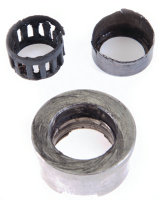



What if there are no codes and a misfire is intermittent? This is where it gets complicated.
What is a misfire? Is a misfire when the cylinder does not fire? Is it when the cylinder fires too soon or too late? The answer is “yes” to both questions. Some misfire complaints are a flashing check engine light, and a P0300 to P0312 diagnostic trouble code (DTC) indicates that one or more cylinders are misfiring. This is the easiest misfire to diagnose. But, what if there are no codes and a misfire is intermittent? This is where it gets complicated.
The area of contact between the lifters and cam lobes is the highest loaded surface inside an engine.

Many alternator problems turn out to be nothing more than a bad connection at the alternator or a bad wiring harness.

All-season coolant used inorganic acid technology and worked great for almost 30 years.

Why do ignition systems give technicians problems when diagnosing ignition-related misfires? The answer is that some technicians use tests that might give inconclusive results or do damage to the coil or drivers inside a module.

Servicing the serpentine belt on some vehicles is a tough task.

Here are six tips to use when diagnosing a vehicle with a dead battery.

As the timing chain wears, it can change the timing of the camshaft and crankshaft.

The primary cause of these problems is that fuel and added detergents are not hitting the back of the intake valves.
